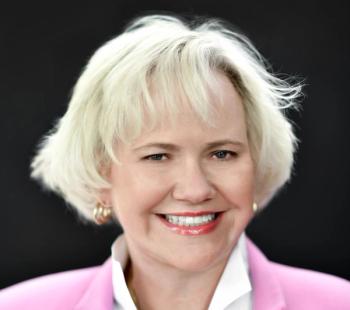
Nursing profession is ‘steeped in racism’
The majority of nurses from minority groups say they’ve personally experienced racism, either from peers or managers. Nurses are demanding change.
For two decades, nursing has ranked as the most trusted profession, according to the Gallup Poll.
But a recent report indicates startling racism in nursing. Nearly half of 5,600 nurses surveyed said racism was widespread, according to the report by the
Most of those who have filed complaints said there was no action.
Debra Toney, co-lead of the National Commission, has worked in nursing for more than four decades and she said she was not surprised. Toney is also the president of the National Coalition of Ethnic Minority Nurse Associations.
When asked what kinds of racial discrimation nurses encounter, Toney said, “There’s racial slurs. There’s a lack of promotional opportunities.”
“The microaggressions are some of the worst,” she said, such as colleagues checking the work of a Black nurse. In Toney’s case, it’s the surprise she has heard when someone learns she has heard a Ph.D.
Nurses also deal with bullying from peers. They also deal with patients who don’t want to be treated by a nurse who is a member of a minority group, and healthcare facilities accommodating those wishes.
Toney said the National Commission knew the report would surprise some people.
“This has shocked quite a few people that the most trusted profession is steeped in racism,” she said. But she said the report should be a wake-up call.
“We chose to be bold,” Toney said. “We chose to use the word racism. We chose to call it straight out like it is.”
‘A national issue’
The racism nurses are experiencing isn’t tied to any one region.
“I feel this is a national issue,” Toney said. “This encompasses all nurses. All nurses have a responsibility in cleaning up this profession.”
Ernest J. Grant, president of the American Nurses Association and a co-lead of the National Commission, said there’s no place for racism in nursing.
“My colleagues and I braced ourselves for these findings. Still, we are disturbed, triggered, and unsettled by the glaring data and heartbroken by the personal accounts of nurses,” Grant said in a statement accompanying the report.
The report offers a host of disturbing findings.
- Nearly 2 in 3 nurses (63%) said they have experienced an act of racism in the workplace, either from peers (66%) or a manager (60%);
- More than half (57%) said they challenged racist treatment in the workplace, but 64% said it made no difference;
- Almost all Black nurses surveyed (92%) said they have personally experienced racism at work, and 70% said it came from leaders, while 66% said it originated from peers.
- More than two-thirds of Hispanic nurses (69%) and nearly 3 out of 4 Asian nurses (73%) said they’ve dealt with racism at work. And 74% of nurses representing other communities of color said they have experienced racism.
Beyond the statistics, the National Commission has gathered
“I have staff — both Black and White — who disrespect you; they make fun of you; I looked forward to retirement,” one nurse said.
“Even our Black patients have bought into believing that Black nurses are less than and cannot provide qualified care,” another nurse told the commission.
Those abuses take a toll.
After 12-hour shifts that include dealing with patients and a work environment where discrimination is tolerated, nurses get worn down and often feel isolated.
“You get to the point where you don’t want to go in,” Toney said, adding that the stress doesn’t stay at the job. “Now you’re home and you're still thinking about it,” she said.
“Healthcare is already difficult and challenging when you’re dealing with seriously ill people,” Toney said. “To have to deal with all the other issues, racism and lack of opportunities, it makes you wonder if it’s worth it.”
At the same time, Toney has heard of nurses who are members of minority groups struggling to get jobs.
“You have new nurses who have gotten out of school and saying they’ve been everywhere to find a job,” she said.
What leaders can do
The nursing profession is overwhelmingly white. Nearly three quarters (73%) of all nurses are white, according to federal data. One in 10 nurses are Hispanic or Latino (10%), while about 8% of the nation’s nurses are Black, and Asians account for 5% of nurses.
As Toney said, many hospital leaders, including chief nursing officers, are white. When she visits hospitals and sees photos of key leaders or their “halls of fame,” Toney said, “The majority of the time, they don’t look like me.”
A lack of diversity in leadership is part of the problem, along with a lack of commitment to change, Toney said. Healthcare organizations must get more nurses from minority groups in their organizations and also promote more minority nurses into leadership roles.
Nurses have to be empowered to come forward to report racist incidents, including slurs or microaggressions, and know they aren’t going to suffer reprisals or career setbacks, she said.
“When it’s reported, you can’t ignore it,” she said.
And that includes racism demonstrated by patients, Toney said. If a patient doesn’t want to be treated by a Black nurse, Toney said, “Maybe that patient doesn’t need to be at that facility.”
Healthcare organizations that are committed to change must engage in serious introspection, she said.
Hospital and healthcare leaders need to examine their policies in hiring, promotion, research and publishing opportunities. They need to hear from nurses on staff who belong to communities of color. “You can't have a robust conversation if you don’t have everyone involved,” Toney said.
Despite the sobering accounts of racism in nursing, Toney said she holds some optimism for change, partly because at least it’s being discussed more openly.
“The leadership has the opportunity,” Toney said. “They make the rules. Their behavior and their biases leak into those policies and procedures. It’s embedded at the top.”






















































































